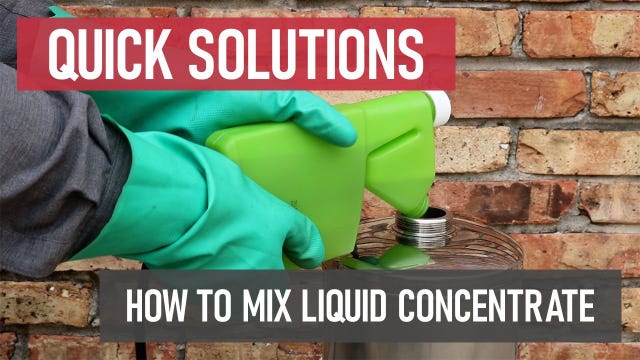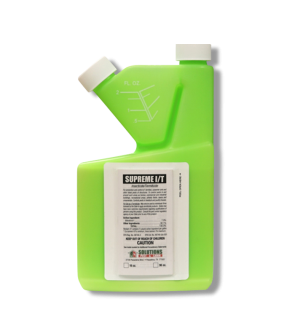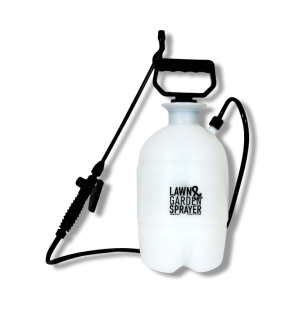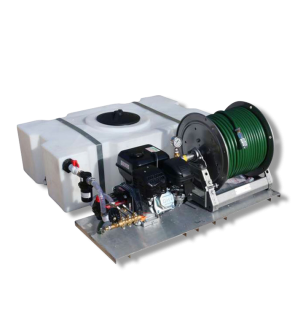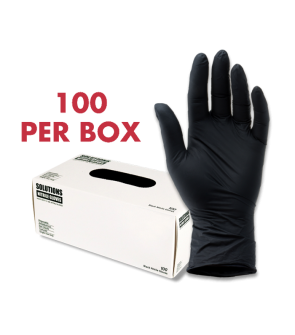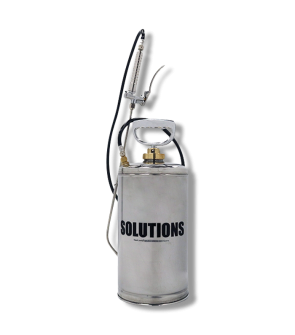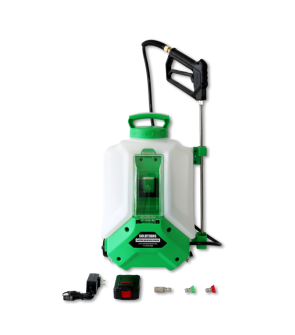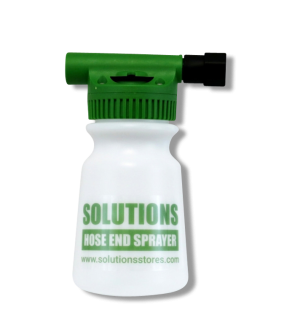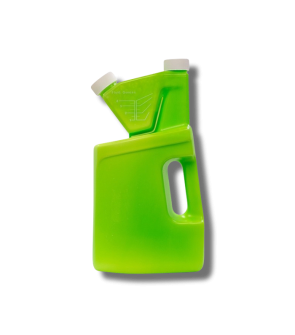Gain access to personalized product screening, the best pricing, rewards, and more!
Most Effective Products
How to Mix and Apply Liquid Concentrates
Applicators use many liquid concentrate types, including herbicides, insecticides, fungicides, and fertilizers. Even the most experienced applicator can initially find treatment with these products confusing.
Use this DIY guide to learn how to mix and apply liquid concentrate products. Be sure to check your product label to ensure its formulation.
Choose Your Product and Tool
To mix and apply liquid pesticide concentrates, you will need various tools. The exact type of equipment you need will depend on the pesticide label instructions.
1-2 Gallon Handheld Sprayer
- These sprayers are best for residential and commercial use.
- The type of application usually is spot treatments.
- They are commonly used for indoor and outdoor applications.
Hose-End or 4 Gallon Backpack Sprayer
- They are best used for residential and commercial use.
- Types of applications are spot and broadcast treatments.
- They are commonly used for outdoor applications.
25-Gallon Economy Spray Rig
- This sprayer is typically used for ranch and commercial use.
- Most treatments are broadcast treatments.
- Sites to use this sprayer are outdoor spaces, less than 4 acres.
50 Gallon Custom Spray Rig
- This sprayer is used for ranch and commercial use.
- Most applications are broadcast treatments.
- This sprayer is done for outdoor use on less than 4 acres.
Personal Protective Equipment (PPE)
- Long Sleeved Shirts
- Closed-toed shoes with socks
- Safety glasses
- Masks
- Respirators
- Chemical suits
- Coveralls
- Chemical-resistant gloves
How to Use
Step 1: Read the Label

Thoroughly read the product label to understand the instructions, tools needed, mixing rates, and where you can or cannot apply the product.
The label is the law and must be followed.
If you need any help reading the label or determining how much product you need to use, please contact us at support@solutionsstores.com.
Step 2: Measure the Treatment Area and Product
 Determine how much liquid concentrate to use by measuring the size of the treatment area.
Determine how much liquid concentrate to use by measuring the size of the treatment area.
To find the square footage, measure the treatment area's length and width in feet, then multiply them together (length X width = square footage).
For acreage, divide the square footage by one acre (square footage / 43,560 sq. ft. = acres).
Some pesticide containers have a tip-n-pour bottle design to help with measuring.
Tip 'N' Pour bottles work by tipping the bottle to fill the measuring chamber. Tip the bottle forward to fill the chamber. Then tip it back and measure the amount of product you need using the slanted line.
Squeeze 'N' Pour bottles work by squeezing the bottle fill the measuing chamber. Remove the chamber's cap to allow for air flow. Squeeze the bottle till the measuring chamber until you have enough product for your application.
Step 3: Mix the Product
- Fill your sprayer halfway with water.
- Pour in the required product amount per label instructions.
- Fill your sprayer the rest of the way with water.
- Close the tank lid and shake well until it is mixed thoroughly.
This process may be rearranged depending on the mixing instructions of your product label.
Step 5: Apply Your Product
Once the liquid concentrate is mixed according to its label, begin spraying.
Depending on the product label, the type of spraying may vary.
A fan spray creates a wide, fan-shaped spray pattern of pesticide or water. It is ideal for treating plant leaves, lawns, soils, band applications in crop rows, and other areas that require uniform coverage.
A cone spray is a cone-shaped spray pattern that typically comes from a cone-shaped nozzle. This spray pattern is commonly used when plant foliage needs to be penetrated well and drift is not a concern. Most insecticides and fungicides will use this application.
A pin-stream is a narrow, concentrated stream of liquid used primarily on crack and crevice treatments. These sprays are also beneficial in ant-mount treatments or for reaching elevated spaces such as wasp nests in trees for precise spraying.
Follow the REI (restriction entry interval) after spraying your product. This is the specific time interval on pesticide labels that tells the applicator how long to stay out of treated areas before it is safe to reenter.
Where to Use

- Ornamentals
- Turfgrass/lawn
- Trees
- Bushes/shrubs
- Foundations
- Utility penetrations
- Around doors and windows
- Eaves
- Cracks and crevices
- Underneath appliances
- Baseboards
- Plumbing penetrations
What To Do After Application
Step 1: Keep Out of the Treated Area
Follow the REI (restriction entry interval) after spraying your product to determine how long to stay out of treated areas.
Step 2: Clean the Sprayer
When you are done spraying, be sure to clean the sprayer before applying the next solution.
Spray water through the sprayer over the treatment area until empty.
Any leftover pesticide solution may be stored in a cool, dry location out of reach of children and pets.
Step 3: If Needed, Water the Product In
Depending on the liquid concentrate, they may need to be watered in.
For example, some turf-dwelling pests may require the product to be watered in to be more exposed to the product material.
Step 4: Properly Store The Liquid Concentrate Pesticide
Store the liquid concentrate pesticide as instructed on the product label. Any leftover pesticide material must be disposed of according to the law in your region.
Typically, most pesticides should be stored in an area children and pets cannot easily access. The environment should be relatively cool, and away from excessive heat, moisture, food, water, and other pesticides.
What to Expect After Application
Increased Pest Activity
For the first couple of days, you may see increased pest activity.
Do not worry; this is normal since the liquid concentrate product is pushing out pests such as ants and cockroaches from their hiding places.
Residue
Some liquid pesticide solutions may leave residue on treated surfaces after drying.
If you need to contact the treated area with residue, clean it before anyone tries to contact it.
Temporary Discoloration
Various herbicides or other pesticide labels may warn that temporary discoloration may happen on certain surfaces.
However, pay close attention, as some discoloration is permanent. The label will warn you to avoid contacting those areas.
Cleaning of Dead Pests/Foliage
After the liquid concentrate has had enough time to dry and work, dead pests and weeds may remain around the treated area.
Key Takeaways
What Are The Three Main Types of Liquid Concentrates?
- The three main types of liquid concentrates are emulsifiable concentrate, suspended concentrate, and water-soluble concentrates.
How Long Do Liquid Concentrates Last
- Liquid concentrate pesticides typically remain stable for 2 to 3 years in storage when unsealed and closed.
How Do Liquid Pesticide Concentrate Work On Plants
- Liquid pesticide concentrates can be absorbed through the roots and leaves of the plants.






